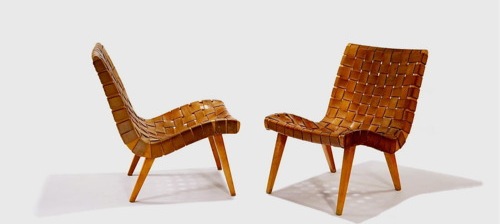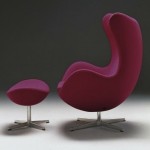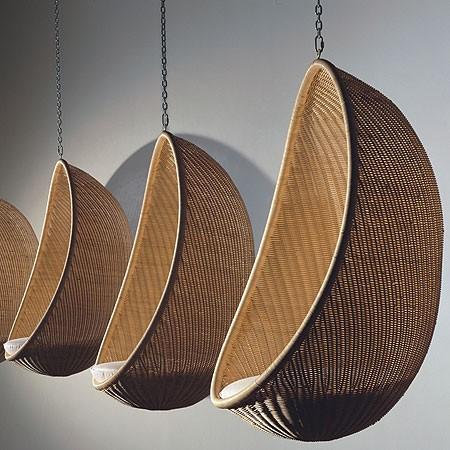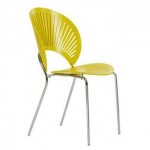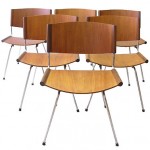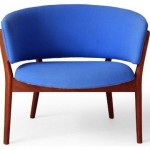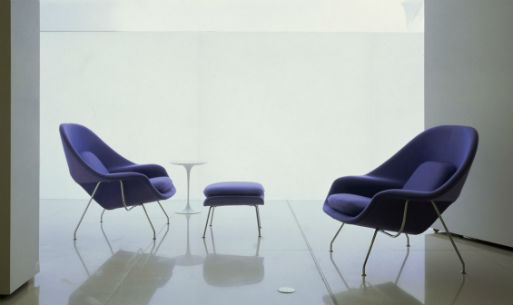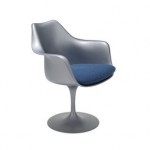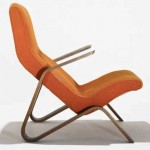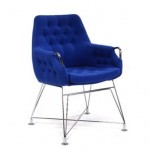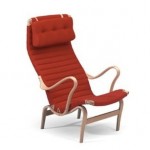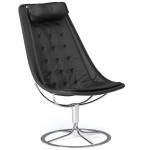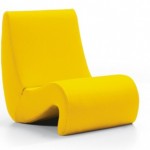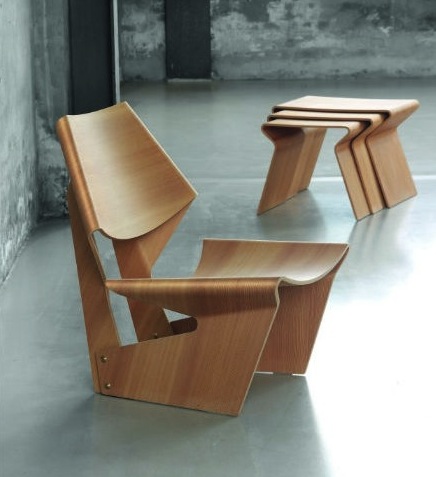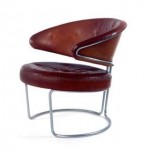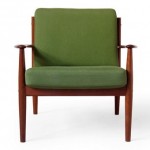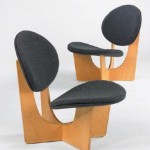Can you believe it’s been months since we last spoke about a group of magical people who live in the magical lands of Scandinavia? How exactly did this site survive? While previous posts highlighted the clean, minimal and organic lines of Nordic design in lamps, storage, accessories, and everything Marimekko, today’s post will showcase classic Scandinavian chairs. So, let’s talk about dead people and the technically revolutionary chairs they created, shall we?
Arne Jacobsen’s Swan Chair
Working as an apprentice bricklayer before studying at the Royal Danish Academy of the Arts, Arne Jacobsen was both an architect and an industrial designer. Aside from the the Swan Chair (a chair built without straight lines, only curves, 1958), Jacobsen is equally known for his Egg Chair (1958) and the Ant and Series 7 Chairs (1952).
[Click on thumbnails to enlarge]
Nanna Ditzel’s Hanging Chair
Trained as a cabinetmaker in her native Denmark, Nanna Ditzel furthered her studies in furniture design at the School of Arts and Crafts and the Royal Academy of Fine Arts in Copenhagen. Following her graduation in 1946, she established her own design studio together with her husband Jorgen Ditzel. A prolific designer in ceramics, jewelry, textiles and furniture, Ditzel is often most recognized and celebrated for her Hanging Chair (1957). Other works of significance are the Trinidad Chair (1993), Stacking Chair (1958), and Armchair (1952).
Eero Saarinen’s Womb Chair
The son of renowned architect Eliel Saarinen and textile artist Loja Saarinen, Eero was born in Finland and raised in the United States. Initially studying sculpture at the Académie de la Grande Chaumiére in Paris, Saarinen eventually graduated from Yale University with a degree in architecture. A request from Florence Knoll to create “a chair she could curl up in,” led to his designing the 1948 Womb Chair and Ottoman. Other well-known seating design achievements are for the Tulip (1955), Grasshopper (1948), and Conference Chairs (1957).
Bruno Mathsson’s Eva Chair
Born into a family of fourth-generation cabinetmakers, Bruno Mathsson acquired an extensive knowledge for the qualities of wood and wood technology while working in his father’s gallery. Mathsson continues to be one of the most celebrated Swedish furniture designers for functionality and is known for his Eva (1941), Milton (1974), Pernilla (1944), and Jetson 66 (1965) chairs.
Verner Panton’s Namesake Chair
Graduating from the Royal Danish Academy of Fine Arts in Copenhagen, Verner Panton assisted Arne Jacobsen on a variety of projects including his iconic Ant Chair from 1950 to 1952. Establishing his own design and architectural office in 1955, Verner’s designs were often experimental, colourful, and a departure from traditional Danish furniture and materials. His collaboration with Vitra culminated in one of the most famous chairs of the 20th century, the Panton Chair (1960). A technical first, the Panton Chair (also known as the “S Chair” or as the “Stacking Chair”) was made from a single piece of plastic. He is also praised for the Heart Chair (1959), Bachelor Chair (1955), and Amoebe Chair (1969).
Grete Jalk’s GJ Chair
Following a year of study in design at the Drawing and Applied Art School for Women, Danish designer Grete Jalk apprenticed with cabinetmaker Karen Margrethe Conradsen for three years. In 1963, she won a British furniture competition for her moulded plywood chair, the GJ Chair. Due to the complexity of the design (it’s made from just two pieces of molded plywood), only around 300 copies were originally produced. She is also recognized for the FH9000 Chair (1967), Easy Chair (1955), and Lounge Chair (1968).
(Images c/o 1, 2, 3, 4, 5, 6, 7, 8, 9, 10, 11, 12, 13, 14, 15, 16, 17, 18, 19, 20, 21, 22, 23, 24, 25)
